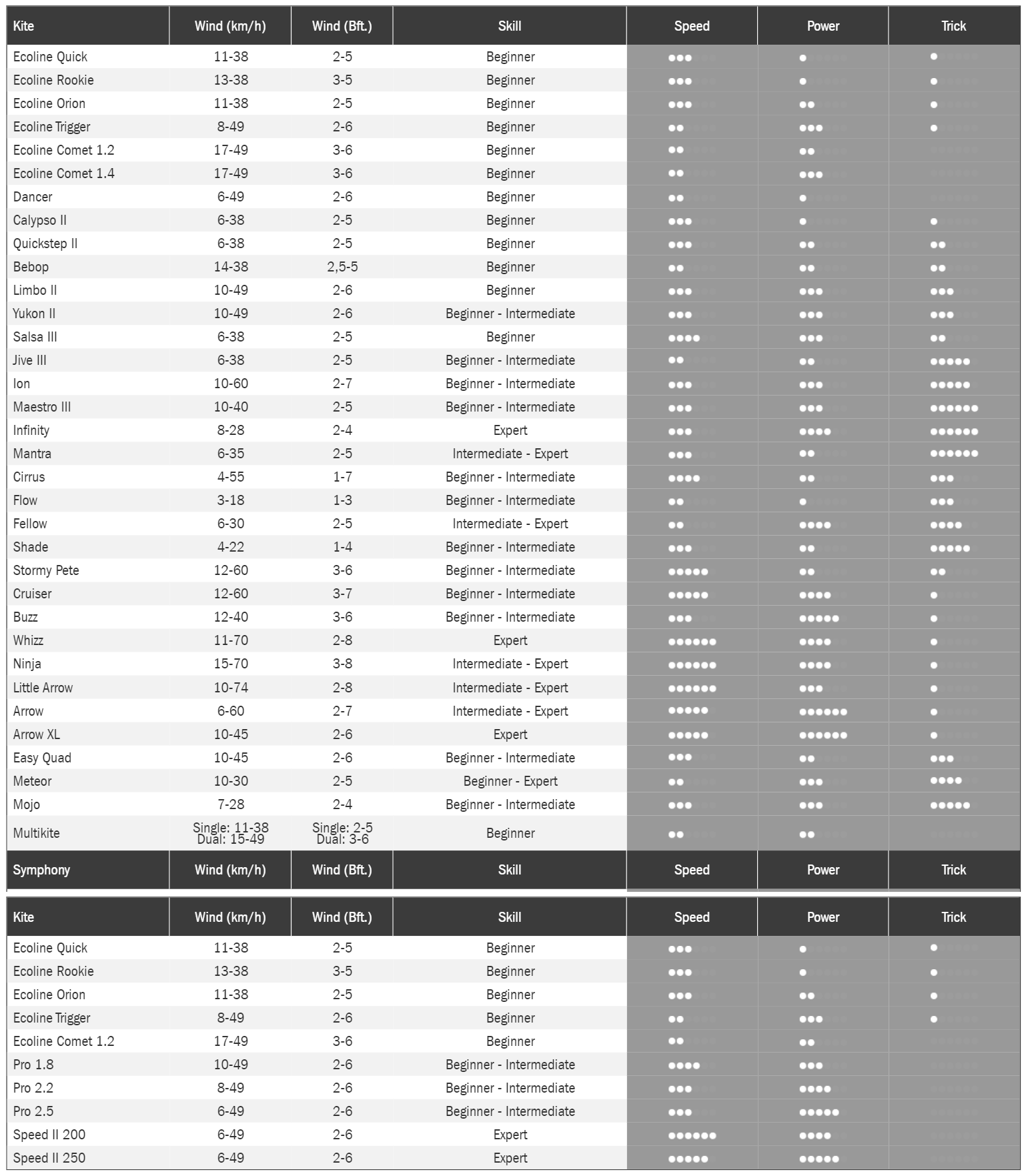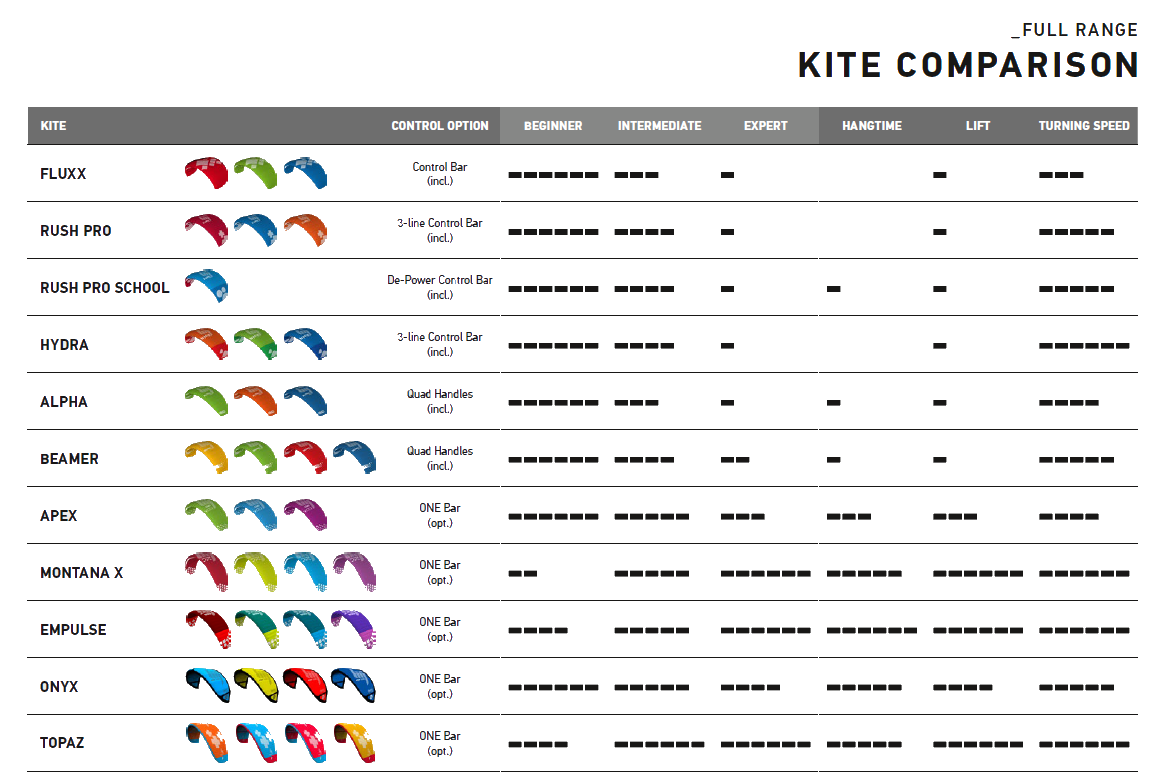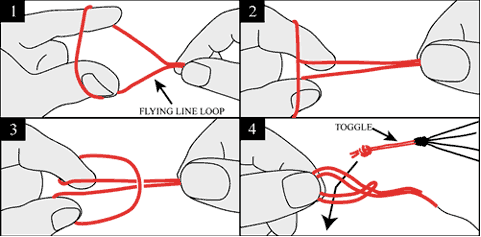Sorry for the inconvenience.
Search again what you are looking for



We have everything for kiting. If you dont find what you you need please contact us.
If you are a professional customer, please contact us for volume discounts.

 All HQ Sport Kites in one table - just to make the comparison easier
All HQ Sport Kites in one table - just to make the comparison easier


With the lark's head knot, you can easily attach your flying line to the bridle of your kite.


The Beaufort scale was long in use as a system for estimating wind speeds. It was introduced in 1805 by Admiral Sir Francis Beaufort (1774-1857) of the British navy to describe wind effects on a fully rigged man-of-war sailing vessel, and it was later extended to include descriptions of effects on land features as well.
| Bft | Sourroundings | Wind | Knots | km/h | mph | m/s |
|---|---|---|---|---|---|---|
| 0 | Smoke rises vertically and the see is mirror smooth | calm | 0 | 0 | 0 | 0 |
| 1 | Smokes moves slightly with breeze and shows direction of wind | light air | 1-3 | 1-5 | 1-3 | <2 |
| 2 | You can feel wind on your face and hear the leaves start to rustle | light breeze | 4-6 | 6-11 | 4-7 | 2-3 |
| 3 | Smoke will move horizontally and small branches start to sway. Wind extends a light flag | gentle breeze | 7-10 | 12-19 | 8-12 | 4-5 |
| 4 | Loose dust or sand on the ground will move and larger branches will sway, loose paper blows around, and fairly frequent whitecaps occur | moderate breeze | 11-16 | 20-28 | 13-18 | 6-7 |
| 5 | Surface waves form on water and small trees sway | fresh breeze | 17-21 | 29-38 | 19-24 | 8-10 |
| 6 | Trees begin to bend with the force of the wind and causes whistling in telephone wires and some spray on the sea surface | strong breeze | 22-27 | 39-49 | 25-31 | 11-13 |
| 7 | large trees sway | moderate gale | 28-33 | 50-61 | 32-38 | 14-16 |
| 8 | twigs break from trees, and long streaks of foam appear on the ocean | fresh gale | 34-40 | 62-74 | 39-46 | 17-20 |
| 9 | branches break from trees | strong gale | 41-47 | 75-88 | 47-55 | 21-24 |
| 10 | weak trees are uprooted, and the sea takes on a white appearance | whole galem | 48-55 | 89-102 | 56-64 | 25-28 |
| 11 | widespread damage | storm | 56-63 | 103-117 | 65-73 | 29-32 |
| 12 | structural damage on land and storm waves at sea | hurricane | >46 | >118 | >74 | >33 |
| kite discipline | Top line strength | Brake line strenght |
|---|---|---|
| sport/trick flying | 25 - 110Kg | - |
| powerkiting | 170 - 210Kg | 75 -110Kg |
| kite buggying | 170 - 300Kg | 75 - 110Kg |
| landboarding/snowkiting | 300 - 375Kg | 300 - 375Kg |
| kiteboarding | 300 - 500Kg | 300 - 375Kg |
Which line strength you should use depends on a number of factors. Ideally one would use multiple line-sets for the same kite for different wind speeds to get the best possible performance. You can imagine that a 2m 4-line foilkite flies great in 20 knots on 200kg steering lines, but fly that same kite with the same lines in 10 knots and you will notice that the lines sag, making steering less responsive.
Even pilot skill and riding style comes in to play when we look at buggy racers, smooth technical racers will use 200 to 250kg steering lines where heavier and/or more aggressive racers will use 300kg lines or even stronger.
Generally high winds and/or heavier pilots require stronger lines.
Line lenght is very much preferential, the rule of thumb is: Shorter lines make steering more direct with the sacrifice of low end performance and long lines give the kite a better low end at the sacrifice of kite responsiveness.
Dyneema® is without a doubt the best possible line to use for kiting, however there are a few things to look out for when using Dyneema® lines;
Knots - Dyneema® handles knots poorly, this is why the lines have sleeves at the ends where the knots are, the sleeves are there to protect the line itself.
As an example: put a knot in a 200kg line and you will cut its breaking strength in half and under tension the line will break right at the knot.
Melting - In comparison to other kite flying lines such as Nylon, Dacron or Aramid/Kevlar, Dyneema's melting point/temperature is lower so if you ever tangle your 4-line powerkite with a single line kids kite (which are generally flown on Nylon lines) chances are you'll lose.
Since 20 years the French company BIC Sport has become the world’s leading expert for water sports. A forerunner in the industrial scale manufacture of very durable surf and SUP boards. Stand Up Paddling, Paddleboarding, Paddlesurfing, SUP – Whatever you choose to call it, is FUN. And unlike other board sports that demand hours and hours of practice to become proficient, SUP is easy to learn and simple to do. It appeals equally to men and women, young and old, families, fitness freaks, thrill seekers, yogis, or anyone curious enough to give it a try.
Once ‘on board’, SUP offers a uniquely elevated perspective on the water and is a perfect way to explore secluded, hidden coves and coastlines. BIC Sport focused its knowledge and experience on launching an extensive range of Stand Up Paddle boards. The boards are largely based on the principles of simplicity and durability at an affordable price.
Search again what you are looking for